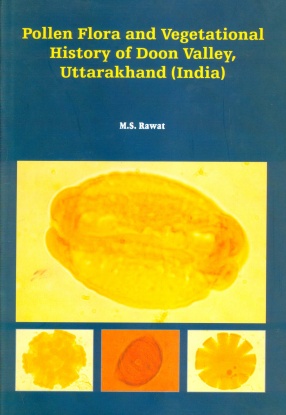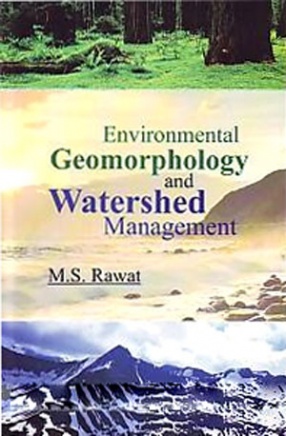Pollen Flora and Vegetational History of Doon Valley, Uttarakhand (India)
The book is the first palynological treatise dealing with the pollen morphology of dicotyledonous species occurring in Doon valley-adjacent Shiwalik tracts and pollen analytical study of swamp deposits in the valley. Part I: It embodies the pollen morphological descriptions of 350 salient dicotyledonous species (279 genera and 103 families_. A "Key to Pollen" and glossary of palynological terms is provided. Pollen are catalogued and illustrated through 50 photoplates, palynotaxonomical observations are made. Pollen exhibiting noteworthy morphological features help their easy identification in palynoassemblages occuring in recent/fossil sediments, air. honey etc. Part II: It deals with the pollen analytical study of Mothronwala swamp (a "tropical valley fresh water swamp" of Champion and Seth, 1968) deposit extrapolated to be ca 1200 years old (radio-carbon dating). The palynoassemblage is catalogued in 15 photoplates. Based on pollen diagram, the subrecent vegetation pattern has not revealed any significant deviation from the extant floristic composition and climate of the virgin swamps in the valley during the last 1200 years. The decline of wooded vegetation in the youngest sedimentary zone around 200 years B.P. is largely attributed to the anthropic pressure rather than climatic factors. The palynological has significantly contributed to clear certain taxonomical and phytogeographical discrepancies cropped since the botanical exploration of this swamp by Kanjilal (1901) and subsequent workers. Two illustrated catalogues (Atlases) which are index of local flora are considered most valuable contributions to the user, particularly to fossil palynologists and taxonomists, besides substantially help researchers engaged in melissopalynology (honey), aeropalynology (air), forensic (crime) palynology, as to their utility for human welfare. The extant and subrecent swamp palynoflora is considered very useful to fossil palynologists to locate Tertiary-Quaternary palaeoswamps, which has attained significance in fossil-fuel research. The book will serve as an adjunct to the pollen flora and the vegetation history of the country in general and Holocene palynoflora of Shiwaliks, the Bhabar, the tarai belt in particular and would widen knowledge as morphology, as reflected in pollen grains, as also on palaeophytogeography as contained in the palynofossils. The manual may also meet the needs of beginners to pick up the rudiments of techniques to pursue their research in palynology.
Get it now and save 10%
BECOME A MEMBER









Bibliographic information